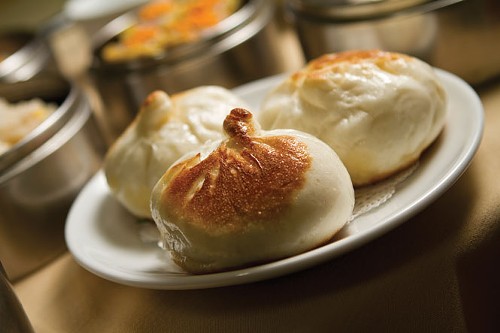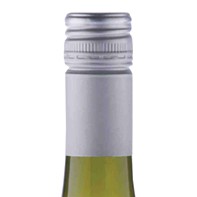It's fortunate that Salt Lake City's Dim Sum House has a sizeable parking lot, with additional spots on the residential streets adjacent to it. That's because, on weekends in particular, the place gets mobbed and stays that way. Throngs gather during the weekend brunch hours (10 a.m. until mid-afternoon) to indulge in dim sum—Chinese small plates or tapas, if you will—and even in the sprawling Dim Sum House, you can find yourself waiting to be seated. My advice: Come early.
My introduction to dim sum was an inauspicious one. I was in graduate school, and had been invited to Los Angeles to deliver a paper I'd written for the American Anthropological Association's annual conference. The title (this was back when I still had a few operative brain cells) was "The Ideology of Binary Opposition: Subject/Object Duality and Anthropology." Whew!
Anyway, some colleagues and I embarked one day for lunch at a Chinese restaurant. As soon as we were seated, pots of tea arrived, along with a parade of rolling carts with small metal steam pots filled with bite-size foods. My friends would point to this dish or that, and the metal containers kept piling up on our table. Meanwhile, I abstained; as a monetarily challenged graduate student, I didn't want to spend money on appetizers, and wondered when we'd get around to actually ordering our meal. I was unaware, until the third or fourth food cart rolled by, that this was our meal.
That was my first encounter with dim sum, a Cantonese style of dining where small portions and plates of food rotate throughout restaurants on food carts. At Dim Sum House, servers lift the lids on metal steamers to show customers what treasures are hidden inside. You won't necessarily recognize everything, but servers can translate most dishes for you. And there's also a very friendly and energetic manager who was a huge help to us Anglos during our visits. So far, during our trips to Dim Sum House, we've been the only non-Chinese patrons in the place.
The cost is almost embarrassingly cheap, with small, medium, large and "special" dim-sum options running $2.80, $3.20, $3.80 and $5.95, respectively. Most dim sum dishes contain three or four portions: three or four pork buns, three or four steamed dumplings, etc. It's food designed for sharing, and the more folks you bring with you to dim sum, the more fun you'll have. During a recent dim sum Sunday with just my wife and me, we were stuffed to the gills and brought home leftovers. The bill totaled $20.93, including sodas.
Dim sum choices at Dim Sum House are pretty standard: an array of steamed or fried dumplings, pork buns (fried or steamed), a porridge-like soup called congee, steamed and barbecued spareribs, egg custard buns, rice-flour rolls and a couple of dessert dishes. Highlights include har gow (a delicate, see-through rice-flour dumpling stuffed with shrimp) and siu mai (cylindrical dumplings filled with minced pork).
Another favorite at our table was delicious minced shrimp rolled and coated with pearl rice. The rice flour rolls—thin sheets of rice-flour stuffed with various ingredients and rolled up like Italian cannolini—are equally tempting. Some are pan-fried and some are steamed with fillings like dried shrimp, prawns, beef and cilantro, barbecued pork and corn kernels. The yummiest, according to me? Rice-flour rolls in a hot pot with tender beef brisket and daikon.
Many dim sum dishes have both sweet and savory appeal. For example, steamed egg-custard buns are a sort of Chinese flan with a crisp pastry crust. Ditto the completely addictive pork buns (char siu) that are barbecued pork morsels encased in a golden, flaky baked pastry crust (sou). Classic pork buns (baozi) are terrific, too: sticky, spongy, fluffy wheat flour buns stuffed with pork, mashed taro, eggplant, shrimp paste and other wholesome things.
Another can't-miss dim sum dish is the pan-fried scallion pancake; I could eat three or four of them, and did. Less appealing to the Western palate, probably, are the chicken claws. Despite a six-hour preparation—which, as explained to me by a friendly Dim Sum House manager, begins with clipping the nails off the foot and continuing with repeated rounds of boiling and frying—chicken claws are very much an acquired taste. They're delicious, but the chewy texture can be pretty off-putting to some. And, I also eschewed the shark-fin soup, not wanting to contribute to the demise of the worldwide shark population.
Although dim-sum dishes are offered all day and night at Dim Sum House, I recommend saving your dim sum orgy for the weekends, when there are many more options to try. However, on weeknights and for lunch, Dim Sum House offers a huge menu ranging from classics like kung pao chicken and beef with broccoli to Peking duck and whole fish, lobsters, prawns and such. The seafood selection, in particular, is excellent, and there are freshwater tanks in the rear of the restaurants that contain live eels, lobsters, turbot and more. Seafood is market priced ranging from $15 domestic lobsters to $42 per pound for ginormous, spiky European lobsters. You may want to BYOB, but there is also wine and beer available.
More by Ted Scheffler
-
Flavor on the Western Front
Nomad Eatery ups the ante for off-airport eats.
- Dec 13, 2017
-
Under the Christmas Tree
Holiday gifts for cooks, foodies and winos
- Dec 6, 2017
-
Spreading the Love
Amour Café creates simple yet scrumptious fare.
- Nov 29, 2017
- More »
Latest in Restaurant Reviews
Readers also liked…
-
Restaurant Review: Loco Burger
Torta-inspired burgers are the name of the game at this South Salt Lake burger joint.
- Feb 1, 2023






